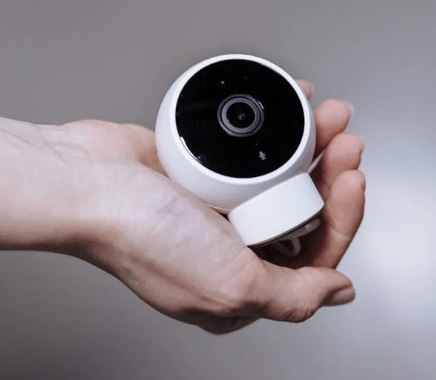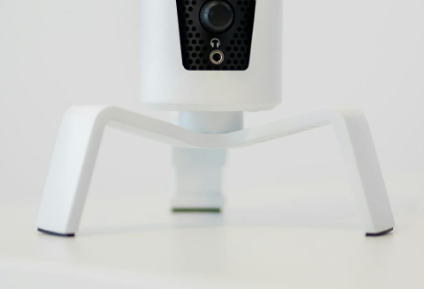Desktop Robots Fall Short of Fulfilling Core Needs | An Industry Report Accessible to All
![]() 11/28 2025
11/28 2025
![]() 443
443
Amidst the recent surge in intelligent hardware innovation, desktop robots have drawn considerable attention and gained traction among consumers. Yet, a closer examination of the market uncovers a fundamental problem: What core needs do these robots genuinely fulfill? This report employs clear and straightforward language to dissect the underlying logic of this phenomenon, providing insights into the current landscape and challenges facing desktop robots.

I. Market Overview: Limited Scale, Sluggish Growth, and Increasing Challenges
To assess whether a product addresses core needs or has the potential to do so, market data serves as a crucial indicator.
The historical market performance of desktop robots and the expectations for their future growth have been underwhelming. In 2024, the global market size for desktop AI companion robots stood at approximately $500 million—a figure smaller than the annual sales of some popular smartphone models. Long-term forecasts suggest the market will only reach about $789 million by 2031, with a compound annual growth rate (CAGR) of roughly 7.1%.
In contrast, general-purpose household robots are projected to have a CAGR exceeding 20%. The primary reason for this disparity lies in the fact that while many service and general-purpose robots currently lack practical functionality for household use, their intended capabilities—such as folding clothes and tidying rooms, tasks that humans generally dislike—address genuine human needs. By comparison, what essential problems do desktop robots solve? Chatting? Controlling smart home devices? These functions can easily be replaced by other hardware, such as speakers.
Consequently, the desktop robot sector is likely to remain a niche market catering to "early adopters" in the foreseeable future, struggling to establish a broad consumer base for essential needs.

II. Core Contradiction: Functions Appear Useful but Are Ultimately Redundant
Current functional designs for desktop robots primarily fall into two categories: emotional companionship and practical assistance. However, neither category clearly fulfills any essential human needs.
1. Emotional Companionship: The Appeal of Electronic Pet Attributes
The emotional aspect is generally the most prominent selling point for desktop robots, targeting the emotional needs of lonely individuals, children, and the elderly through human-like appearances, expressions, movements, and voice interactions. For instance, Living.AI's Emo can engage in human-like games using facial expressions and movements, while Sony's Aibo conveys emotions through body language, prompting emotional responses from users.
However, the uniqueness of this emotional connection is limited. For children, other types of toys can achieve similar effects, and the value of parent-child interaction cannot be replaced by robotic companionship.
For the elderly, phone calls with children and conversations with neighbors offer far more warmth than interacting with a robot. Similarly, for young people, short videos, social media, and pets provide more effective relief from loneliness. What unique advantage does an interactive, orbiting robot offer? The answer remains unclear.
Recent market feedback supports this observation. Companies that were early entrants in the desktop robot market now commonly face growth ceilings, with sales plateauing at around $15 million. Relying solely on "cuteness" and "humanization" as emotional appeals makes it difficult to retain users long-term, as most people set aside these robots after the initial novelty wears off.

2. Practical Assistance: Functions Duplicated from Other Devices
To move beyond their toy-like image, many desktop robot manufacturers are exploring practical applications, such as assisting users with schedule reminders, information organization, home appliance control, and health monitoring. These robots position themselves as desktop assistants.
However, these functions merely replicate capabilities of other devices without offering any irreplaceable value.
Schedule reminders and information queries are already more conveniently handled by smartphone alarms and voice assistants (e.g., Siri, Xiao Ai). Home appliance control is more effectively managed through smart speakers and mobile apps, eliminating the need for an additional desktop device. As for health monitoring, smart bracelets and watches provide real-time data collection, making remote monitoring by desktop robots less efficient.
3. Hybrid Approach: Attempting to Be Both and Succeeding at Neither
Recognizing the limitations of single-route strategies, many brands have begun experimenting with "emotional + practical" hybrid models, such as using emotion recognition to remind users to drink water or combining schedule management with emotional reassurance. However, this fusion is essentially a superficial combination of simple functions, failing to create true synergy. Does reminding someone to drink water really require emotion recognition? It seems rather impractical.
This awkward predicament of being unskilled in both areas fails to convince users to invest in such devices.

III. Root Causes: Technical Limitations and Misaligned Positioning
Many issues with intelligent hardware stem from two fundamental causes: insufficient technological advancement and a lack of true understanding of market needs. Desktop robots are no exception, as their failure to fulfill essential human needs arises from a dual misalignment of technical capabilities and market positioning.
From a technical perspective, current embodied AI remains in its infancy. While emotional AI can recognize facial expressions and tone through cameras and microphones, it struggles to truly comprehend the core of human emotions. Its long-term learning capabilities are limited, with "habit memorization" mostly based on simple data patterns rather than proactive anticipation of user needs. Additionally, the high cost of precision actuators forces manufacturers to choose between compact size with weak functionality or rich features with exorbitant prices, failing to balance "practicality" and "cost-effectiveness."
From a positioning standpoint, many entrepreneurs fall into the trap of prioritizing "intelligence" for its own sake. Some manufacturers overly emphasize "humanization" and "multifunctionality" while neglecting the core user need for solving specific problems. The logic of essential products always revolves around "users have pain points, and products provide solutions." Desktop robots, however, continue to create pain points and pile on features without identifying unique value scenarios.

IV. Future Directions: From Versatility to Specialization, Targeting Niche Scenarios
To overcome the lack of essential needs, desktop robot entrepreneurs must abandon the pursuit of being all-purpose devices and instead focus on specialized niche scenarios, delivering differentiated value to meet specific human needs.
Based on industry trends, two directions are worth exploring:
First, deepening vertical niche scenarios to become indispensable tools. For example, could robots for children integrate "play" and "learning"? In office settings, could "small collaborative robots" be developed to precisely grasp desktop stationery and deliver files within offices, addressing pain points in small-space item transfer?
In such scenarios, the "compact size" and "precise operation" of desktop robots can create unique advantages, complementing rather than competing with existing hardware.

Second, controlling costs to lower the barrier to entry. Current desktop robots often cost over $150, exacerbating the issue of "lacking essential needs." If prices could be reduced to the $45-$75 range while focusing on 1-2 core functions, more users might be enticed to try them. By offering "low barriers + core value," manufacturers can cultivate user habits and gradually uncover additional essential needs.
V. Conclusion
In summary, desktop robots remain inherently non-essential or pseudo-essential products, urgently requiring breakthroughs in both technology and scenarios. For consumers, there is currently no need to pay for "novelty"; waiting for technologically mature and scenario-specific products is advisable.
END







